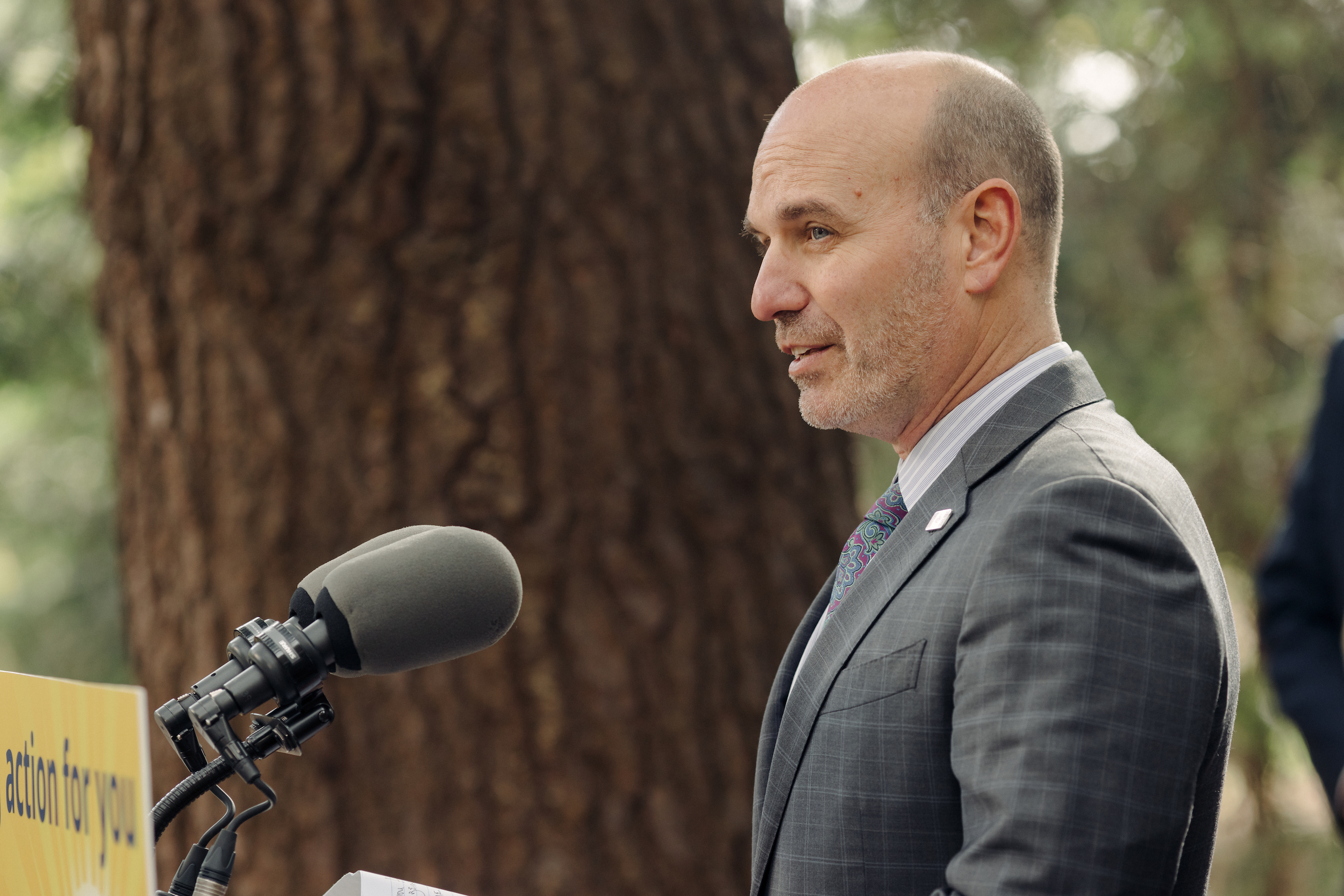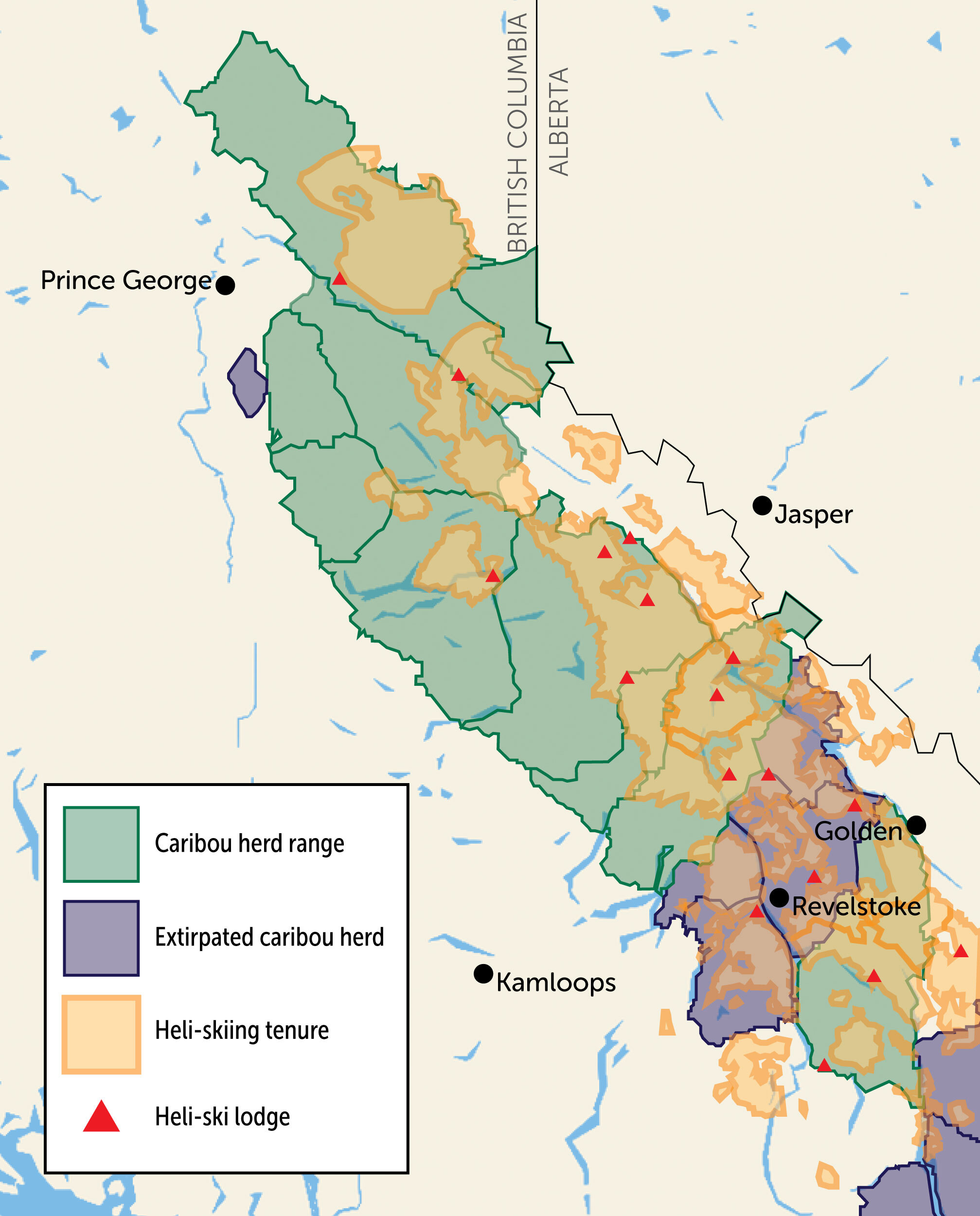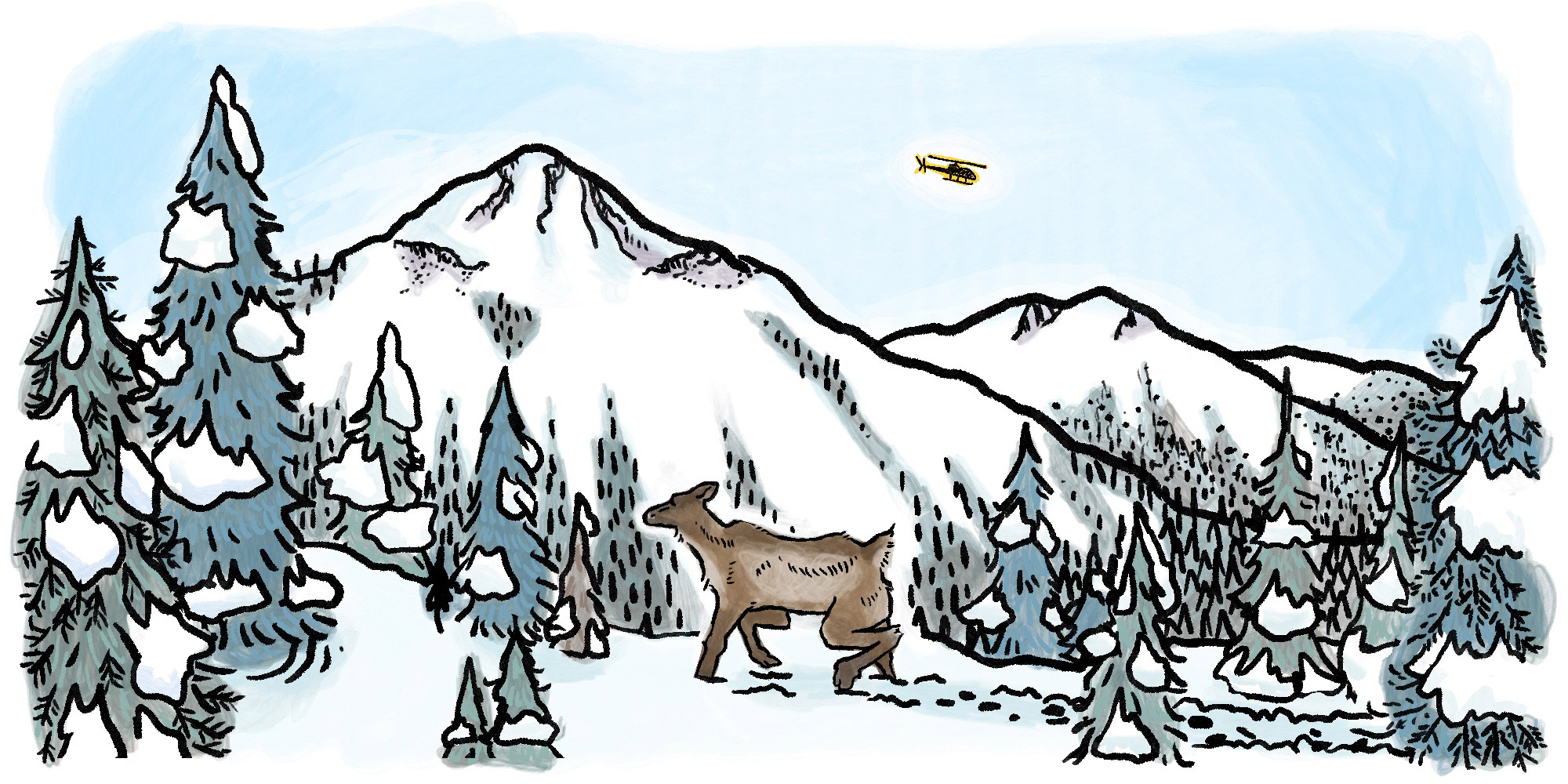
Meet Andrew Munroe, The Narwhal’s web developer
Sitting at the crossroads of journalism and code, we’ve found our perfect match: someone who...
B.C. Lands Minister Nathan Cullen says the province is considering a “blanket” policy requiring heli-ski companies to report where they fly in order to protect at-risk caribou. But before making a final decision, he says he first wants to engage with industry and review the results of a data-sharing pilot project.
Wildlife biologists say they need more data about heli-ski operations to better understand — and minimize — any potential risks to imperilled southern mountain caribou herds and other sensitive wildlife.
Cullen initially told The Narwhal in a Feb. 28 interview that new requirements to report flight data would be added to all heli-ski licences as they came up for renewal.
He walked back that commitment in a subsequent call on March 12, after The Narwhal had reached out to industry association Helicat Canada, a few heli-ski operators and others for comment.

Some “folks have been asking for a bit of time to maybe offer up other solutions,” said Cullen, whose ministry recently took over responsibility for issuing heli-ski licences from the Ministry of Forests.
“If there’s a more efficient way to get to the same outcomes, if there’s a better tool, then we’re open to it,” he said. “We’re just trying to make the space available for that conversation.”
New requirements to report flight data have been added to a few licences and a number of other heli-ski operators have come forward to voluntarily provide data as well. Cullen said these operations will form a pilot project to test whether flight data helps improve wildlife management.
“I want to see the results and the effectiveness as a caribou conservation tool, before we make it a blanket, across-industry policy,” he told The Narwhal.
In a statement, Ross Cloutier, CEO of Helicat Canada, said: “I think this is a very smart position for the minister to take and we look forward to these conversations.”
The pilot, “hopefully, will enable the government to learn whether or not this is a worthwhile endeavour,” he said.
Eddie Petryshen, a conservation specialist with the Kootenay-based organization Wildsight, meanwhile, said he’s “pretty lukewarm” about the prospect of a pilot project.
While it’s good to see some willing partners, he said, all heli-ski companies should be reporting data about their operations.
“That’s a basic thing that they should be willing to do,” Petryshen said. “And, if it’s not happening, the province should force them to do it.”
“Delay does not benefit caribou,” he warned.
Cullen’s comments come after years of growing frustrations among wildlife biologists over resistance from some quarters of the heli-ski industry to sharing flight data.
Heli-ski companies offer a unique experience, flying their guests to remote backcountry areas to ski incredible terrain. Many heli-ski companies are based in smaller mountain communities and play a significant role in local economies. According to Helicat Canada, the heli-skiing and cat-skiing sector account for about 3,000 jobs during the ski season.
The B.C. government grants companies licenses to operate in expansive tenures, which in some areas heavily overlap with the high elevation habitat southern mountain caribou herds rely on in late winter.
Southern mountain caribou have suffered precipitous declines as forestry, mining, road construction and other development have chewed through their habitat. Eight herds have been lost in just the last couple decades.
Like other species, these deep snow caribou are particularly vulnerable to disturbance in the winter. Snowmobiles and helicopters, for instance, can cause caribou stress, distract them from eating or even cause them to flee, expending valuable energy stores they need to survive the winter.

Without detailed flight path data to show when and where heli-ski companies are operating, biologists say it’s difficult to assess the potential impact. But the findings of a recent study suggest there may be some risk: researchers found caribou ranges were 80 to 120 per cent larger in the winter of 2020-2021 when there was a dramatic reduction in heli-skiing due to COVID-19 travel restrictions.
While the study doesn’t offer any definitive conclusions about the impact of heli-skiing on caribou herds, Darcy Peel, the director of B.C.’s caribou recovery program, previously told The Narwhal it supports calls for more detailed data about heli-ski operations.
Helicat Canada CEO Cloutier said when it comes to wildlife, heli-ski companies are “the most conservative” users of helicopters in the province. The sector has integrated specific training, wildlife observation and reporting protocols and flight rules into their operating standards, he said.
“Our position is that others, including the government, should have the same conservative flight protocols that ski operators implement and that these, and any flight reporting requirements, should be applied to all,” he said, noting that government biologists use helicopters and net guns to capture caribou.
“I think that’s a little bit of a deflection,” Petryshen said. Biologists, who may capture caribou to attach GPS collars for instance, know it’s stressful for the animal and “should only be done when it’s absolutely necessary.” There’s a calculation that goes into it, he said: “Are we going to learn more than it’s going to cost the herd?”

As for the question of heli-ski flight data, Cloutier said: “we have always said that we are prepared to provide the data if processes are in place to provide unbiased analysis and that others live to the same rules. So far, none of this is in place.”
Aaron Reid, a wildlife biologist with the Ministry of Water, Land and Resource Stewardship’s caribou recovery program, previously told The Narwhal he’d like to see flight data collected from all helicopters, all the time. Discussions are focused on heli-skiing for the moment given the sector’s high level of activity and the sensitivity of wildlife during the winter. The province has also taken steps to limit snowmobiling in some areas of winter caribou habitat.
Petryshen, meanwhile, expressed frustration about Helicat Canada’s resistance to sharing flight data.
“There’s been some heli-ski companies that have shown us there is a way forward and I think Helicat Canada needs to really come to the table and be a willing partner,” he said.
In a unique case in northwest B.C., for instance, Skeena Heliskiing has been reporting its flight data for years in response to a request from a First Nation government.
“I think for us, it works,” Martin Wehren, the president and general manager of Skeena Heliskiing, said in an interview with The Narwhal late last year. But he said it’s important to recognize that every tenure is different.
A key difference is that in the Skeena tenure, the species of primary concern is mountain goats, he said.
“Where mountain goats want to live in the winter is not really where we want to ski,” he explained. “They like the rocky, steep faces,” he said. “We like smooth, kind of low angle slopes and hills.”
The government has implemented some no-fly zones for Skeena Heliskiing to protect mountain goat winter habitat, which Wehren said adds flying time over the course of a season because the company can’t always take a straight line to its ski areas. But it hasn’t impacted which runs the company can use, he said.
In areas where heli-skiing tenures overlap with southern mountain caribou ranges, however, caribou and skiers tend to use similar terrain.
Cullen said he thinks it’s reasonable to open the door to discussions with the sector given regional differences, and to see whether the data provided under the pilot project leads to better wildlife management before making any industry-wide decisions, but he warned that this is a “time-limited” conversation.
“I think we’re sending a pretty clear signal to those operating and flying in caribou habitat be it for heli-skiing or other operations that we know that disturbance of caribou herds at sensitive times of the year can be very detrimental to the herds’ survivability,“ he said.
Get the inside scoop on The Narwhal’s environment and climate reporting by signing up for our free newsletter. On a warm September evening nearly 15...
Continue reading
Sitting at the crossroads of journalism and code, we’ve found our perfect match: someone who...

The Protecting Ontario by Unleashing Our Economy Act exempts industry from provincial regulations — putting...

The Alberta premier’s separation rhetoric has been driven by the oil- and secession- focused Free...
